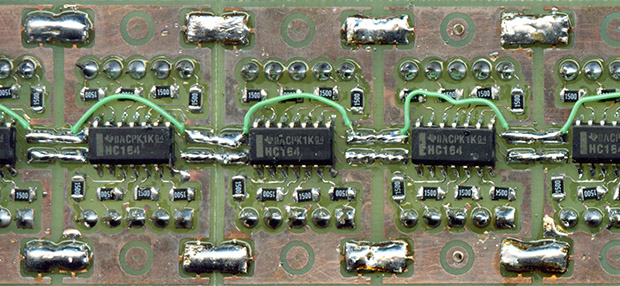Driving A Large 7 Segment Display Using A Microcontroller

Help: Driving a 5 inches 7 segment display. And it is good. But when I tried to create a simple count up program using a microcontroller to count from 0 to 9.
Table of Contents • • • • • • • • • • • • • • • • • • • • Circuit Principle Seven segment displays internally consist of 8 LEDs. In these LEDs, 7 LEDs are used to indicate the digits 0 to 9 and single LED is used for indicating decimal point. Generally seven segments are two types, one is common cathode and the other is common anode. Important Related Post – In common cathode, all the cathodes of LEDs are tied together and labeled as com.
And the anode are left alone. In common anode, seven segment display all the anodes are tied together and cathodes are left freely. Below figure shows the internal connections of seven segment Display. Internal Connections of Seven Segment In the first circuit, I will interface a Common Cathode Single Digit 7 Segment Display to the 8051 Microcontroller while in the second circuit, I will interface a Common Anode type 4-Digit 7-Segment Display to the 8051 Microcontroller.
Circuit Diagram Circuit 1: Interfacing 7 Segment Display to 8051 (Single Digit – CC) In the first circuit, I am interfacing a Single Digit 7 Segment display with 8051. The 7-Segment Display is of common cathode type.
Circuit 2: Interfacing 7 Segment Display to 8051 (4-Digit – CA) In the second circuit, I have interfaced a 4-digit 7-Segment Display to 8051 Microcontroller and the display type is of common anode. Circuit Components • AT89C51 Microcontroller • AT89C51 Programming board • Programming cable • 12V DC battery or adaptor • Common Cathode 7 segment Display • Common Anode 4-Digit 7-Segment Display • Resistors – 10KΩ X 2, 330Ω, 1KΩ X 8, 470Ω X 4 • 1KΩ X 8 Resistor Pack • 33pF Ceramic capacitors x 2 • 11.0592 MHz crystal • 10μF Electrolytic capacitor • 2N2222 NPN Transistor X 4 • Push button • Connecting wires Also read the post – [?] Circuit Design Circuit 1 Here, common cathode seven segment is used to display the digits. In this circuit, pins a to h of the 7 segment are connected to the PORT 2 of the microcontroller and com pin is connected to the ground through the 330 ohm resistor.
This resistor is used to drop the voltage. Since we are using common cathode seven segment we need to send LOGIC 1 to the segments to glow.
Figure shows structure of common cathode seven segments. Here dot is used for indicating the decimal point. Here all the cathodes of LED’s are connected to the Gnd pin. The operating voltage of this LED’s is 2 to 3V but from controller we will get 5V so to drop the remaining voltage we have to connect a to g pins to the controller through the resistor.
Armor wrote: I found a common solution on the Internet that uses a ULN for all 7-seg units, or a transistor for every 7-seg unit. However, I am confused The example you posted is not addressing your problem - it's just showing how to use transistors to select the 'active' digit in a multiplexed display. The same current drawn by every segment also passes through the pins of the microcontroller.
Krizz kaliko genius zip. Won't this damage the microcontroller if the 7-seg display is large enough? In which case you will also have to add some sort of driver for each segment. For example, Googling ' ' gave this (among others): Note how there is a driver for each digit and a driver for each segment. (I haven't reviewed it in detail - just taken the image as showing the principle). I would like to suggest another solution: You can also choose to not multiplex the digits and instead drive the display statically. Because most microcontroller don't have enough ports, you might want to use the TPIC line of shift registers.